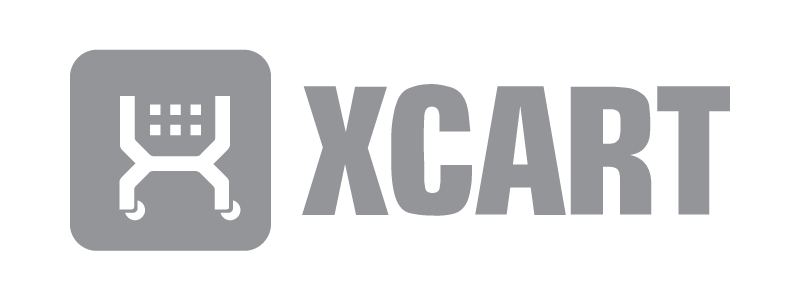Online stores are popping up everywhere, but most get zero traffic, let alone sales.
Some stats have a figure of around 80% failure rate. You don’t want any part of that.
You’re here because you’ve done your groundwork and found a good niche, but you want to turn that into a profit.
You have to start an online store the right way, then promote it to generate sales.
Having a live website doesn’t mean it’s truly launched. You wouldn’t get sales unless you have all your ducks in a row and promote it right.
It’s a huge mistake people make. Just because you build it – doesn’t mean people will come.
But you can make sales on day 1 of your launch. In this step-by-step guide, I’ll show you how.

Get Your Ecommerce Business Strategy Right To Cut Out Uncertainties
Before you rush into setting up an ecommerce store and starting a business, you need to do in-depth research and formulate your business strategy. Ignoring this will leave you fighting an uphill battle. You can check out these eCommerce examples and understand how these successful ecommerce businesses are doing their business strategy.
Your market research cuts out the uncertainties in the viability of a product and niche and lets you know how much work you need to put in.
Make sure you get these right:
- Choose a highly leveraged business model
- Pick in-demand niche and scalable products
- Create the right pricing strategy that gives you an edge
- Find legit suppliers to get products from
- Check out your competitors to see their monetization strategies and overtake them
- Choose a catchy name and get your business license and LLC. Set up your virtual office.
- Research deep into your target audience and build personas.
- Iron out your startup costs, variable costs, break-even point, and revenue projections
I have gone deep into how to do each one of the outlined steps in this article. If you take your time to study it, keep your hands in the trenches, and get this done, you’ll save money, time, and effort. Also, you can look at these ideas for products to sell.
Don’t jump into ecommerce unless you understand the fundamentals.
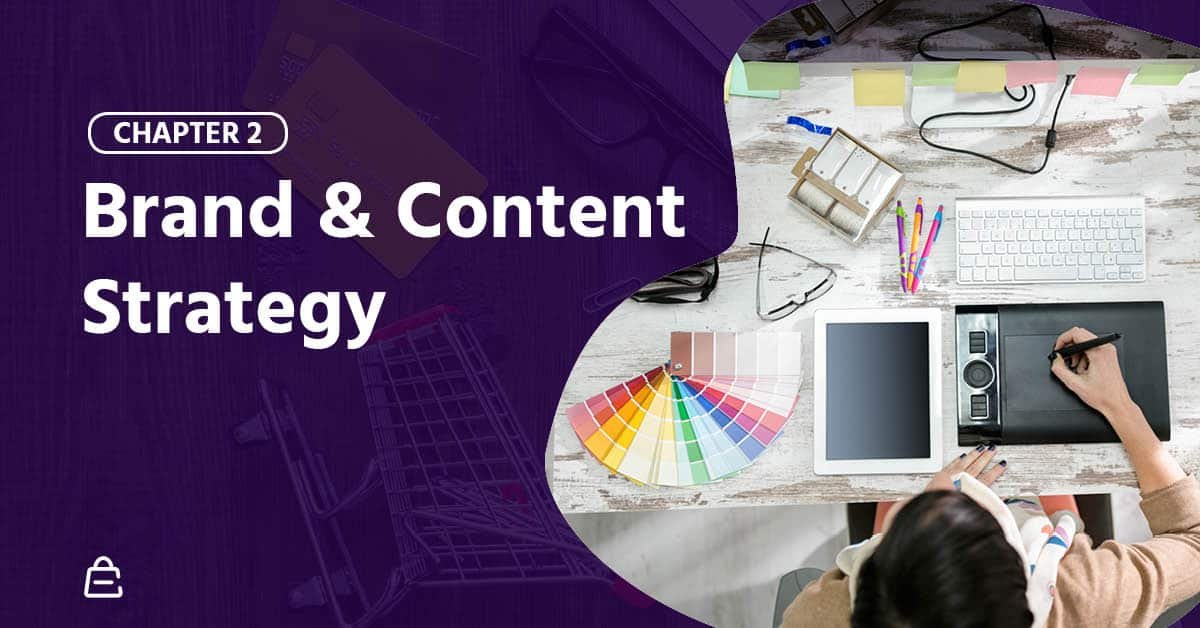
Create Your Branded Content To Connect With Target Market
If you’re starting an online store, know that you need content. Too many online retailers expect people to buy once they get to their site. Wrong. People hardly ever choose to buy because they see your ad. They choose brands that they feel have the same values as them. Your content needs to connect with your target audience.
That’s why I emphasize target market research. You can’t nail this down correctly without knowing who your customers are.
That’s why the first thing you need is to do is learn who your ideal shoppers are.
Differentiating Your Brand
Your content should answer why people should buy from you. This is where points of difference (POD) and points of parity (POP) come in.
People ask me all the time: “How do I make my brand stand out”
My reply is always, “Who do you want it to stand out to?”
POD differentiates you from other brands; it’s the benefits/attributes that customers strongly associate with you and can’t be found elsewhere. You need to emphasize this in your brand messaging.
POP is not necessarily unique, but you try to match what your competitors offer in some aspects. For example, if I were to buy leggings, breathability might be a strong factor for me across all brands I’ll check out. The absence of POP might become a reason to drop your website for another ecommerce store.
Map Your Content To The Buyer’s Journey
Focus your keywords on moving people down the buyers’ path. To do this, you need to research. The keywords that your target is searching for help you understand the kind of content they are looking to see.
Regardless of the volume of a keyword, if you can capture the intent behind that search in your content, you can get more conversions that running after high volumes. The people that come in contact with your brand will be at different stages of awareness. Some will not even be aware of the problem – they’re at the completely unaware stage. Others will be in one of these stages:
- Problem aware
- Solution aware
- Product aware
- Most aware
The most aware are the easiest to convert because they are searching for your exact brand name or product. The take-home you should have is that regardless of the stage your potentials are in, your content should get and engage them.
You have to capture the right content and modifiers for your marketing journey.
When you start an online store, no one is aware of your solution or brand, so you have to focus on the top end of the funnel. Check out how the keyword modifiers can be mapped to the buyers’ journey.
- Informational: how, what, why, etc
- Research: brands, types, benefits
- Evaluation: best, top, comparison
- Transactional: buy, deals, discount
Let’s take a look at how this could play out:
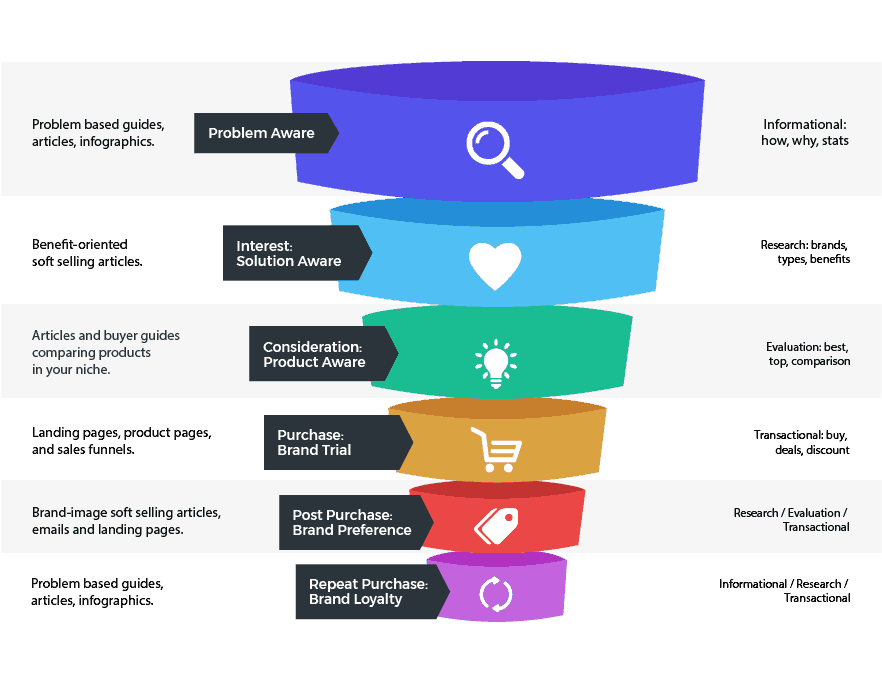
Map your content strategy and prepare for these different stages in the journey. And keep in mind the potential stage of awareness your user might be in.
Also, prepare for people that have bought from you. It’s less expensive to retain them than acquire new customers. That’s where email automation and retargeted ads come in. Optimize your content for cross/upsells after purchase and getting reviews. Don’t forget those that don’t buy from you after a while. I’ve explained more in the email automation section of this article.
Brand Imagery
In addition to written content and messaging, you need to line up your branded imagery before you start building your website. You’ll need product photos, lifestyle images, and stock photos to supplement your image library.
Your logo, choice of colors, and fonts all matter. Make sure it accurately reflects the brand you want to create. More importantly, make sure it will resonate with your target customer.
Additional Resources:
- How to Use Market Segmentation to Group Customers
- How to choose a brand name
- Product Photography: How To Market Products With Photos [19 Pro Tips]
- 19 Persuasive Marketing Techniques For Product Descriptions That Sell
- Why Creating Buyer Personas Is So Important In Branding
- Inclusive Buyer Personas: Where new product ideas live and growth happens
- How to Start An Online Boutique
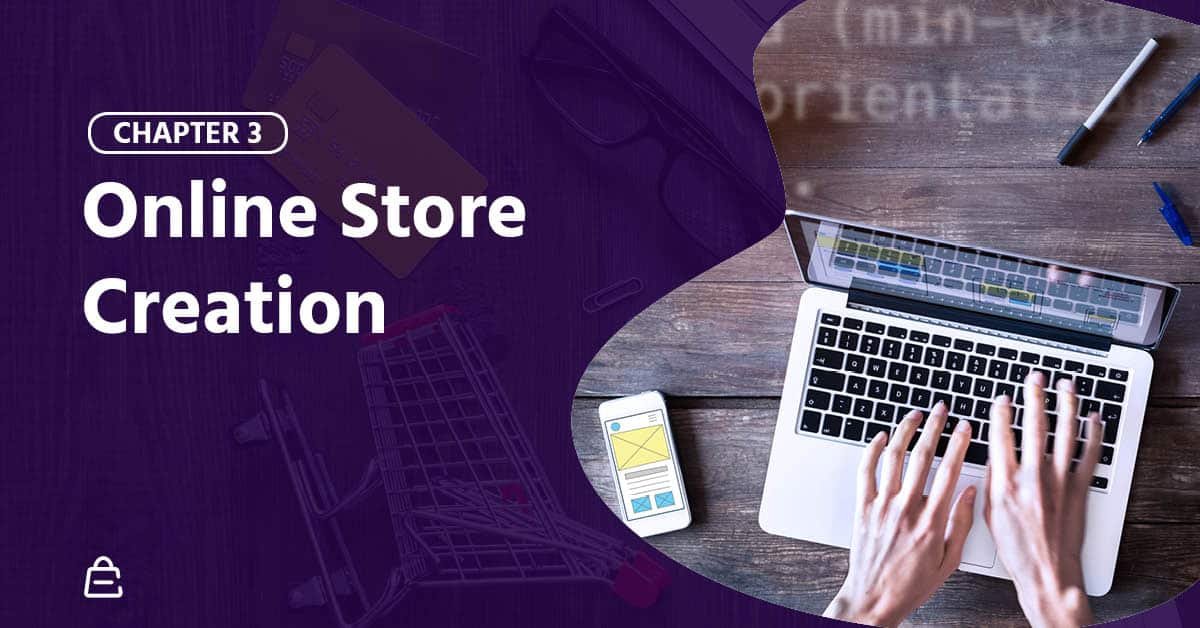
Setting Up Your Online Store For Succes
The end goal of starting an online store for most people is sales. To get sales, you need a website, but a great store is more than having in-demand products. Your communication, branding message, and appropriately uploading products are important. Follow the steps below to turn your researched niche into a foundational sales machine.
How to Start an Online Store: Decide On Ecommerce Platform
Choosing the right ecommerce software has a significant impact on your bottom line, but you don’t need to do this until you’ve figured out your business and content strategy. Don’t jump into this step until your strategy has been laid down.
Lots of people see reviews on ecommerce platforms and go for Shopify, but it’s not great for content-driven brands. Your platform is not all you need to succeed. However, the features it has can influence the type of marketing you do.
Shopify May Be Your Best Bet
I prefer to use Shopify or BigCommerce website builder. BigCommerce tends to work best for stores with multiple categories and lots of SKUs. Shopify is best for beginners and multichannel selling.
Choose A Template That Connects With Your Business And Customers
It’s nice if you want to get a custom design. However, the tens of thousands of dollars that you might pay for a custom template can go into marketing your store, getting your products, and more while you spend under $200 for a theme.
Don’t pay an expensive designer when there are premium themes that work. There are tons of theme marketplaces, and most ecommerce platforms have their own marketplace.
Some tips on choosing a theme:
- If you only have three products, don’t choose a theme designed for ten categories and thousands of products.
- Avoid “multi-purpose themes”; they are usually filled with code bloat.
- Make sure you check the Google Speed Score of the theme before you buy it
- Add a product to the cart and make it clear that a product was added. Some of the WooCommerce themes are very subtle when a product is added.
For WooCommerce, I recommend Astra. It rocks. There’s a free version, a freemium, and a paid option starting from $60. On BigCommerce, you can choose based on your industry and some store features.
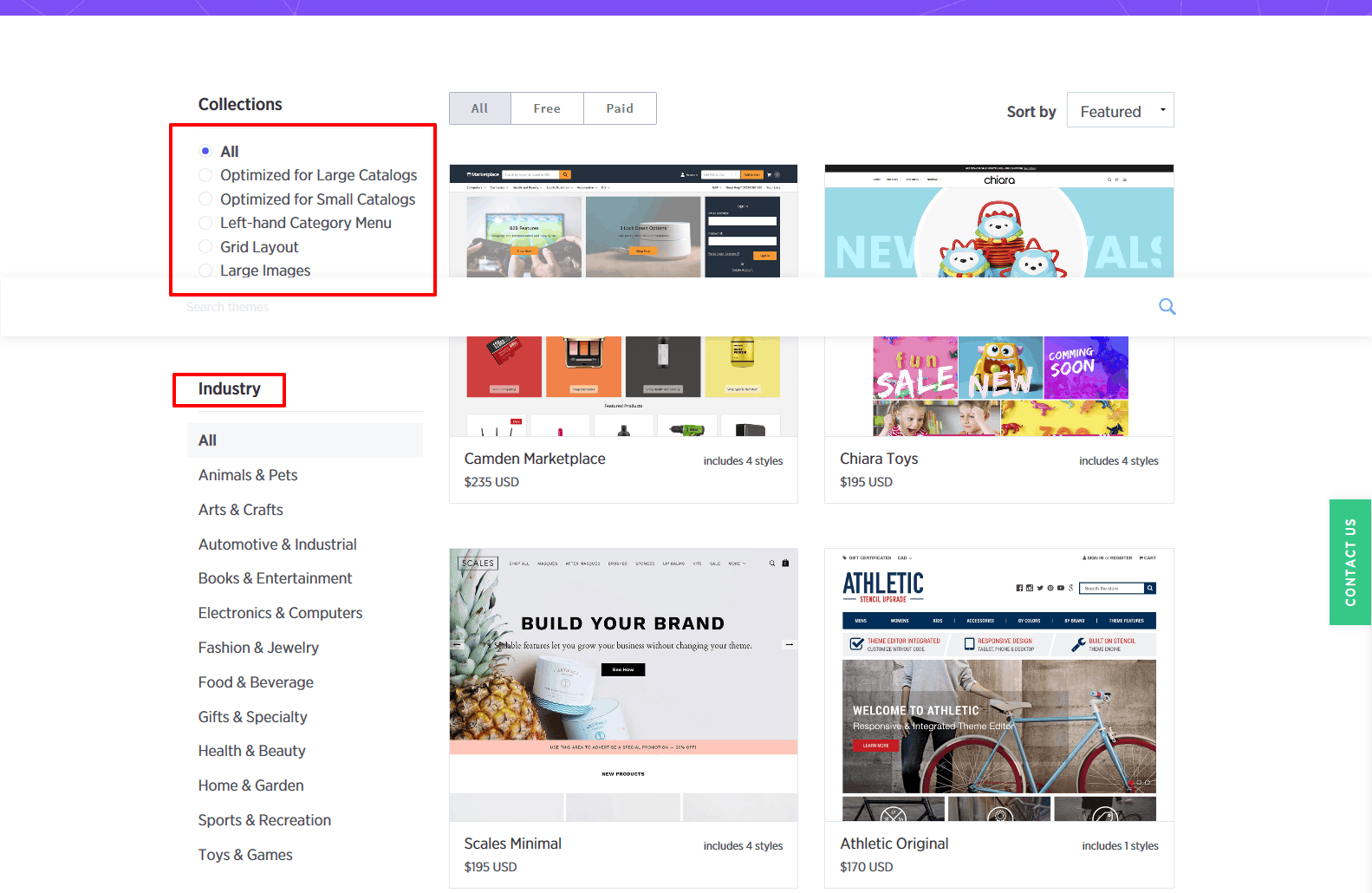
Customize The Theme
One thing that I like about Astra is that you can import a demo site. You could design from scratch, but why go through that when you can import a pre-built website and change the things that you don’t like? All you have to do is install the Astra Start Sites Plugin and Elementor Plugin.
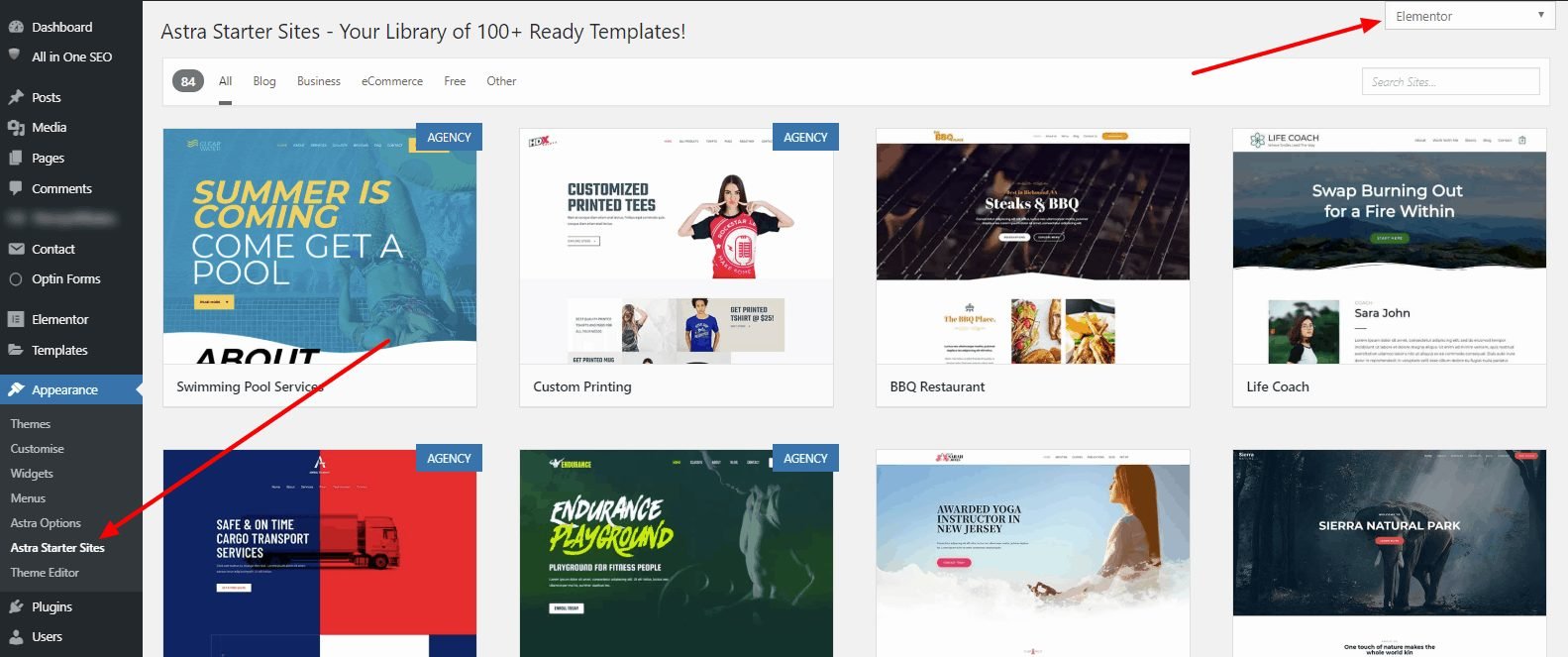
Also, you should customize your WooCommerce site to take on your brand identity. Do that through the customize button under Appearance.
Set Up Payment Gateways
You need a way to collect money. Set up PayPal and choose any other processor to accept credit cards. Stripe, Square, and Amazon Pay are options that online retailers use.
You’ll need a business bank account to collect your money through your processor. Before you choose a payment processor, check out its rates so that you know the amount you’ll get in your bank account at the end of the day. Also, ensure that you’re capturing payments automatically.
Set Up And Configure Apps/Extensions
You’ll need apps/plugins/extensions – whatever you want to call them. You don’t have to go all out and get every sweet-looking application. Stick to the basics so that your site can work properly, and you wouldn’t have to deal too much with plugin incompatibility (if you’re using WooCommerce).
Look into getting these apps:
Facebook Pixel
With Facebook Pixel, you can track your conversion from your FB ads, retarget people who’ve visited your store or Facebook Shop, and optimize your ad spend for certain audiences – like those that are most likely to buy from your website. It’s very important. To set it up, add a Facebook Pixel:
You can set up the pixel by clicking on “pixels” under the event manager in your Ad manager.
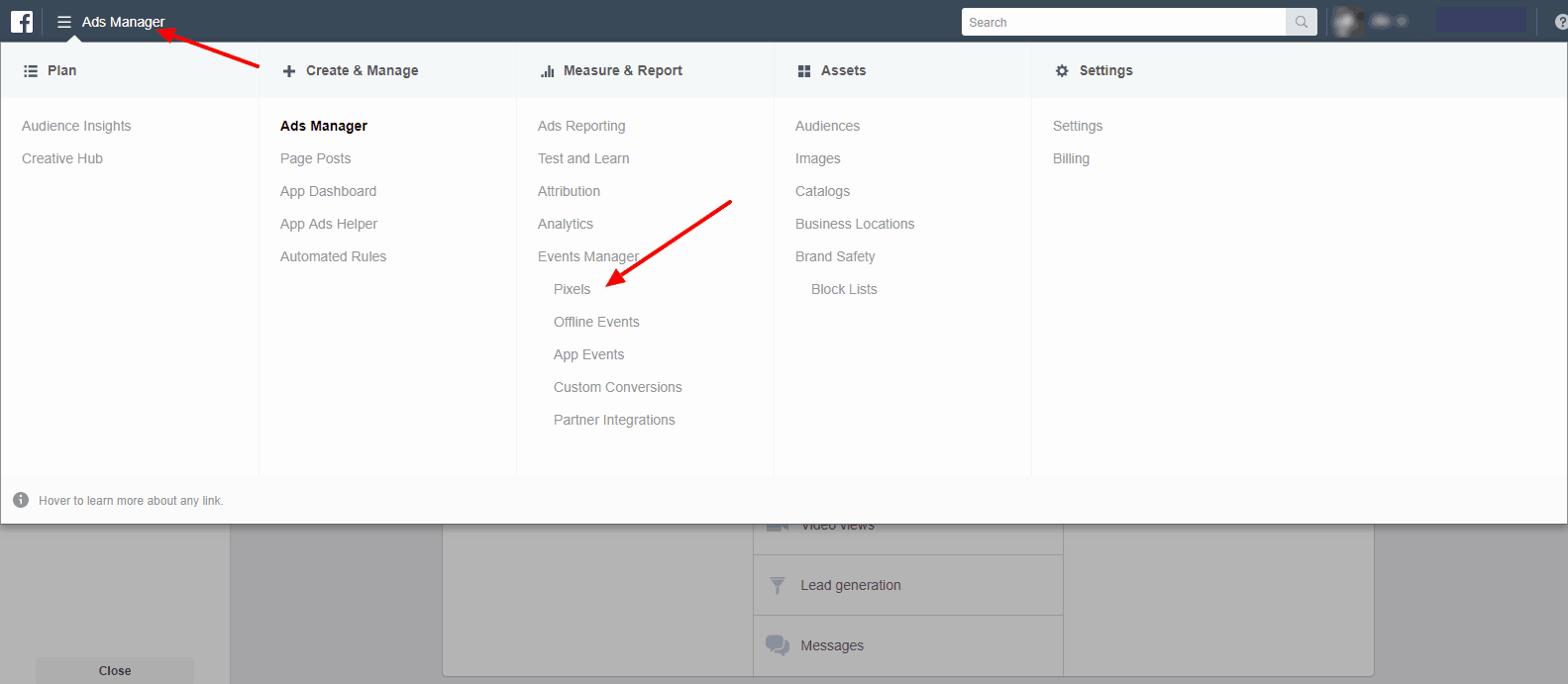
Click on add new data source, select Facebook pixel, and set that up. While doing that, either select manually install event code or connect to a platform.
To connect it to your website, you can either copy the code to your header, upload the code extension to your ecommerce platform (through connect to a partner platform), or connect using a plugin. The other two are explanatory – FB also has clear tutorials on them. For the plugin:
- Install the Pixel app in your online store (Pixel Caffeine for WordPress)
- Copy the Pixel ID from FB and paste it into the plugin
SEO Plugins
For a start, SEO plugins are necessary. You want to set up your metadata, canonicals, format, verify Google Search Console, etc. If you’re using WooCommerce, there are a ton of them. Use one that allows you to configure the settings of your sitemap – what goes in there and set different ones if you want. Yoast or SEOPress will do the trick.
Google Analytics
You should connect your ecommerce website to Google Analytics to monitor things. Turn on ecommerce settings.
Shipping
Set your shipping zones and have a plugin for real-time shipping rates, tracking, and connection with your fulfillment provider – Amazon or others. BigCommerce and Shopify have these set up better. You can get a plugin/extension for this functionality in WooCommerce. Do your research to get the right one.
Add Your Content and Products To Your Online Store
In this section, I’m going to walk you through uploading content for your pages and blogs. By the end of it, you should be able to upload content and add SEO settings for posts and pages.
Have your hosting and themes set up first because you need a space to upload your content. Also, If you’re using WooCommerce, I advise that you have Elementor installed before adding your content. Go to plugins, add new, and install Elementor Page Builder.
Setting Up Page Content
Follow this checklist when uploading content to your pages:
- The Right Voice/Tone Is Used
- Set Up Up Seo Plugin (Seopress Or Yoast)
- Set Up Custom Home Page Using Elementor
- Add About Page
- Add Other Branded Pages
- Customize The URLs
- Optimize The SEO Title
- Ensure You Have Alt Tags For Images
- Edit Your Meta Description
- Images/Video/Audio Display Correctly
This is how to do it.
On your WooCommerce dashboard, click on pages. You can either click “add new” on the dropdown or the add new button in the pages section.
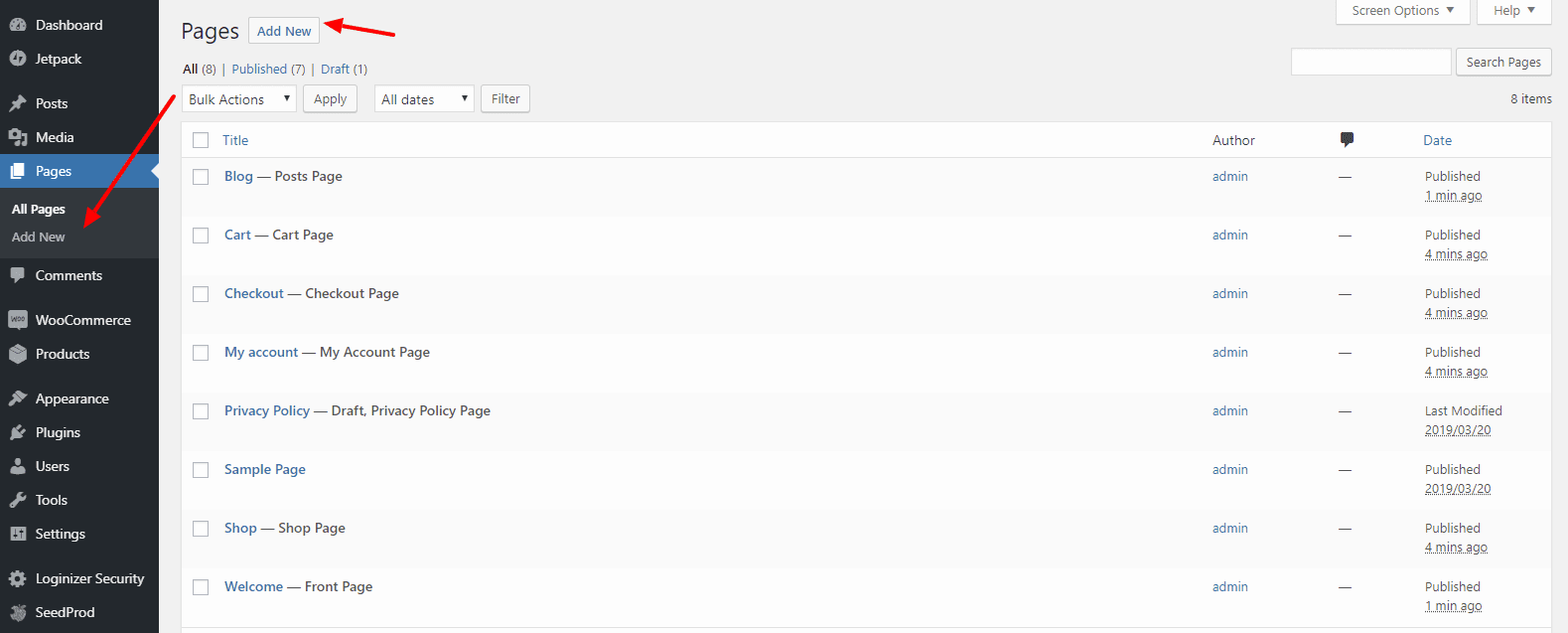
You can use the Gutenberg editor, but that doesn’t give you so much flexibility. You can mix both by using Elementor templates or use Elementor only. Choose your elements and upload your images and text.
In BigCommerce, go to your dashboard and look out for the storefront. Click on it.
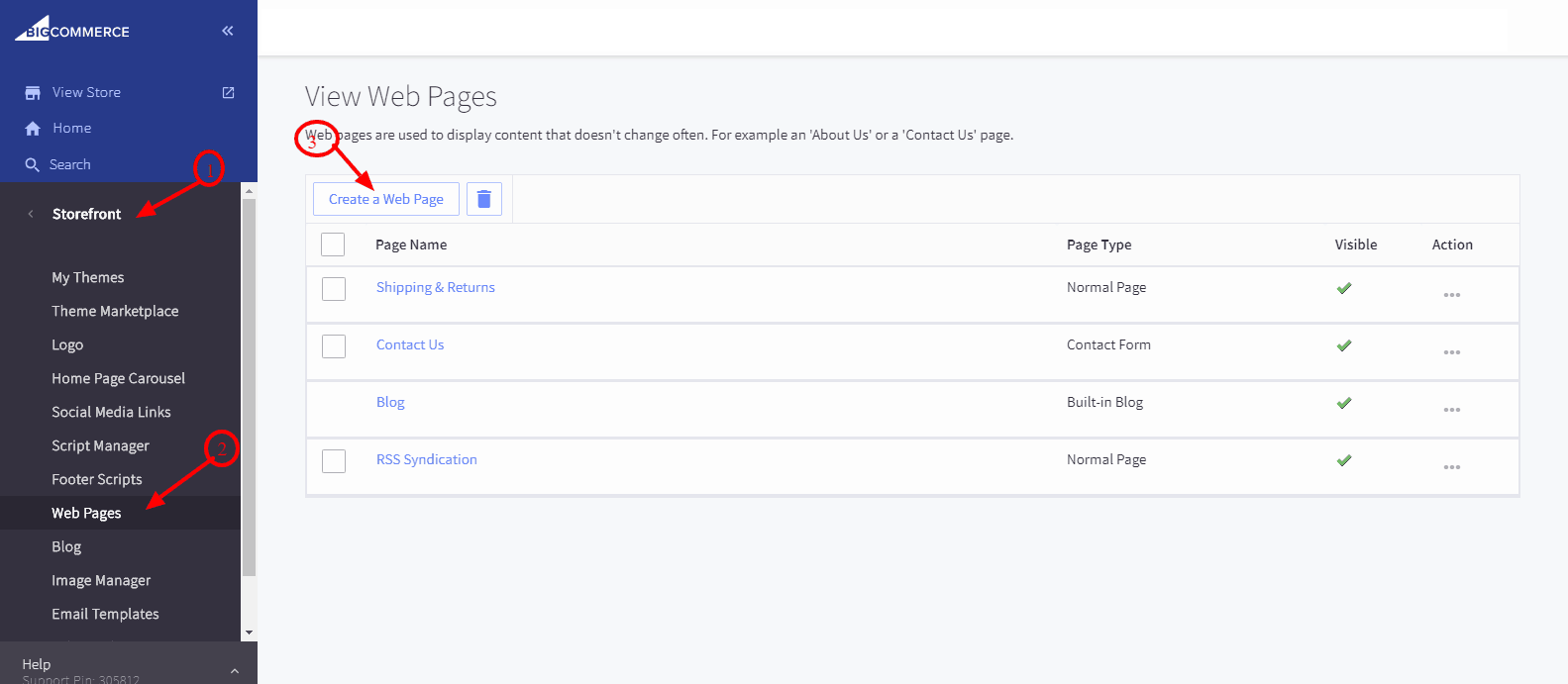
Click on “web pages,” then create a new page. BigCommerce doesn’t have a drag-and-drop editor, but you can still insert your content in the WYSIWYG editor.
Some ecommerce platforms have better SEO than others. For BigCommerce, check the “advanced section.” On WooCommerce, as long as you have installed your SEO plugin, you should find a section to add your metadata below your content in the Gutenberg editor.
Use the right compelling words. Your title and URL should have exact keywords. Your headline should have your main keyword. Drip in your focus keywords in prominent places in your content – bolds, bullets, subheads.
Uploading Blog Posts
Publishing blog posts is straightforward. On WooCommerce, click on posts and add posts on your dashboard. Upload your content and headings. Do the same thing for the SEO, as I have explained above. Also, check these things:
- The headline is optimized
- URL is edited to have exact keywords
- The right voice/tone is used
- Paragraphs align well
- Lists are formatted well
- Headers (H1, H2, H3) are in their rightful places
- Consistency in the flow is implemented
- No repetitive words or phrases are used
Setting Up Products On Your Online Store
For WooCommerce:
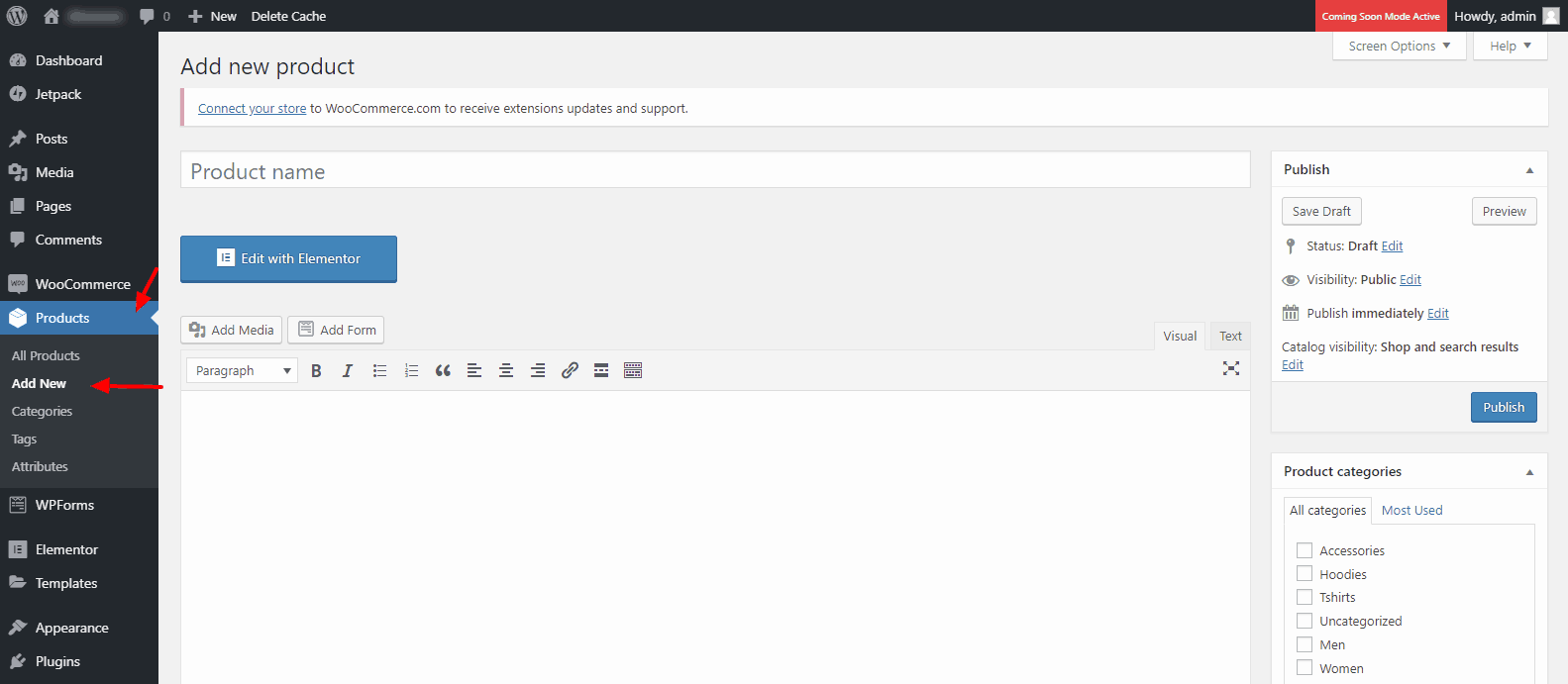
- Click on add new products
- Fill in the product name, images, long description
- Put in your inventory, pricing, and short description.
- Categories
- Variants
- Shipping details – price, discount, etc
- Add SEO details like metadata
- Cross-check to ensure all is in place
- Publish
If you have lots of products, it will be a pain. You can use the bulk import using a CSV file.
For BigCommerce, input the same details. Click on products on your dashboard. If you’re uploading a single product, you can use the “add product” link:
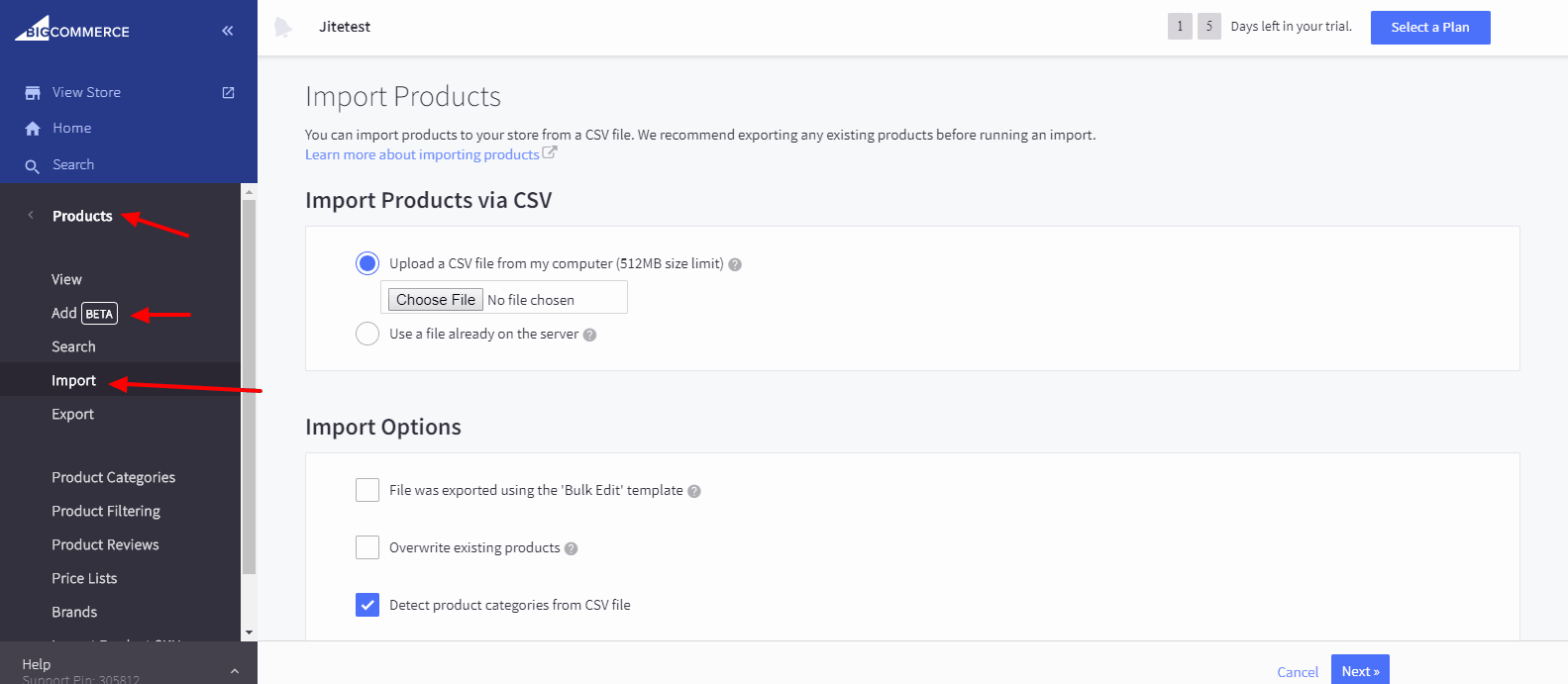
If it’s with a CSV, choose “import product.”
That’s not all for setting up your store. There’s a free checklist that you get when you register for ecommerce business school. It contains all you need to do, from steps to setting up your business plan to post-launch.
Add Your FAQ And Privacy Pages
You need to have your FAQ, terms and condition, privacy policy and returns policy pages.
Even if you’re just entering the starting online store phase and haven’t been asked so many questions, think of the information that potential customers might want to know and create an FAQ for them.
Concerning privacy policy and terms and conditions, you can use an auto-generator or get a template online. Ensure that it matches e-commerce. Also, some industries need more information on those boring pages than others. If you need legal help, talk to a lawyer.
Have A Clear Return And Refund Policy
Your customers will want to know what your refund policy is. That’s their backup if something goes wrong for them. Set up that page as well – returns and refunds. Write down the timeframe within which they can return products and if there are any terms to getting refunds. Ensure that it’s simple & crystal clear.
Set Up Support Channels To Build Trust And Conversions

Make it easy for your customers to contact you. UX is your friend here. The customer support section of the website nav is nicely grouped together.
You can set up a live chat. There are many that support ecommerce. Tidio is one of them. Have other means for contact as well, be it email or phone. Have a contact page, too, that’s clear on how customers can get in touch.
Ensure that your support channels are apparent on your website. Customers shouldn’t have to jump past hell and high water to get to you. I like this layout – simple and bold.
Additional Tools and Resources:
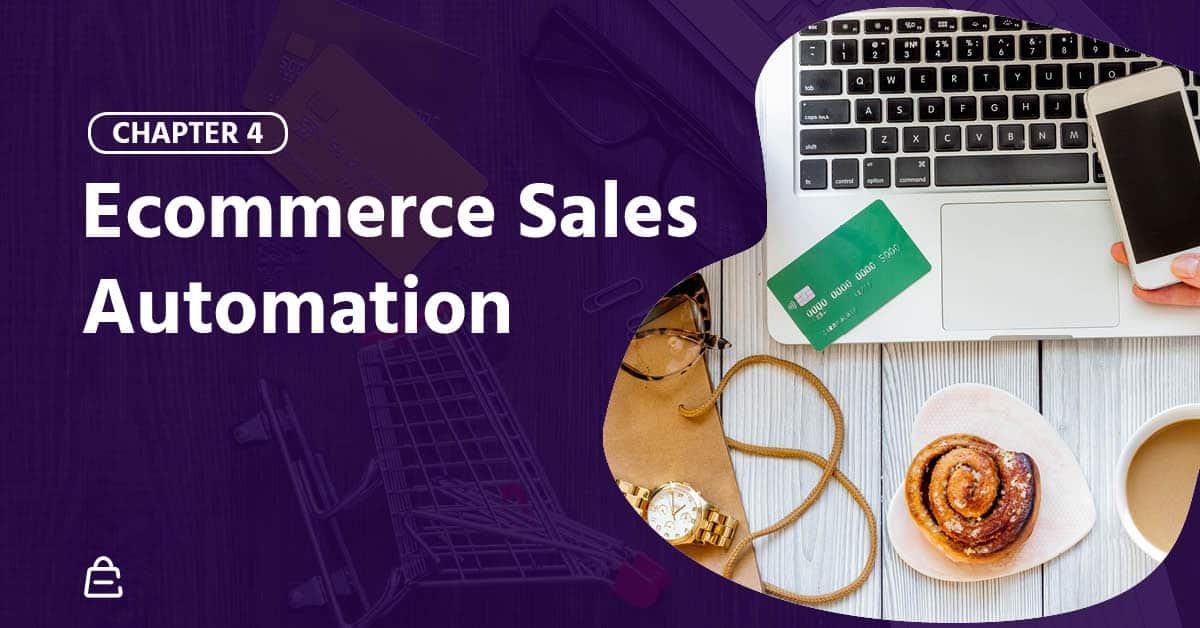
Build An Optimized Buyer Journey With Ecommerce Automation
How to open an online store is more than the basic store setup.
It takes 6-7 interactions before people buy from a small business for the first time. They may have come across your ads, gone to your site. Leave, come back later, view a product, see an email from you, etc., before they decide that they’ll go with you.
You need to automate your buyers’ journey to push them into completing a purchase. If you don’t and your competitors have one, they’ll leave and go elsewhere. Even Amazon is there to take them.
Set Up Your Sales Funnels
A sales funnel is the path/buying process that you lead your store visitors to encourage them to make a purchase. You need one – One FB ad isn’t enough.
Below are two funnel examples you can use as a starting point. Keep in mind you can mix and match these. For example, you could send FB ads to both your blog content and your landing pages.


Set up your sales funnels before launching your store. It’s more than uploading products and using ads. You can’t rely on buyers’ browsing behavior to get sales. Focus energy on setting up funnels that work. You shouldn’t have friction in your funnels. They should be smooth and simple.
Come up with product offer ideas for your funnels. You can check your competitors’ sites for inspiration. You could include some viral elements like sharing on social media to get a discount – that brings more people to your online store.
Make Sure There’s Less Friction
Don’t stress out visitors with having to go through a ton of processes to get your offer. Each step in your funnels should smoothly move into the other. For example, one of your sales funnels can start with a product offer. Collect emails at this step. Then send them to checkout without having to retype the details they have given you.
Then, a 1-click post-purchase upsell can be brought in to increase order value. It removes one cumbersome part of buying – checkout – and makes it easy for your customers to make that purchase.
Lure Customers In With Free Offers
The words “free” and “discount” trigger an impulse for many people. Give potential customers a free trial of your product with codes or gift cards. Offers are a top factor when deciding to buy for 74% of Americans, according to a RetailMeNot Survey. Don’t ignore their power. Place them right and ensure that users don’t have to go through a lot of steps to get them and use them. You can ask for an email to provide the discount, or use a contest.
Have Ways To Get Back Those That Don’t Buy
Even with the sweetest offer, some people will not buy at that time. They might need more convincing. Get emails so that you can use them to capture people back. Have a step in your automation for this.
Additional Tools and Resources:
- 3 eCommerce Conversion Funnels: Practical Guide
- Build WooFunnels
- 25 Best Ways to Market Products Online & Generate Revenue
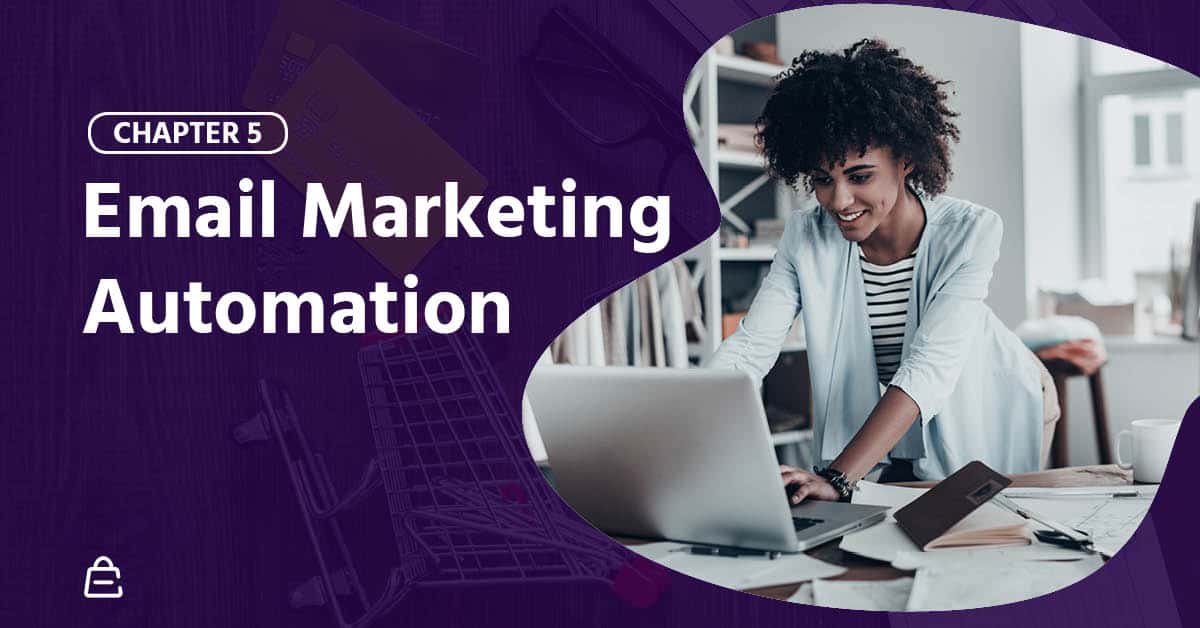
Set Up Your Email Marketing Automation
Setting your email marketing automation is not a promotional tactic – this is part of setting up your online shop. An online store is much more than just some pages with buy now buttons.
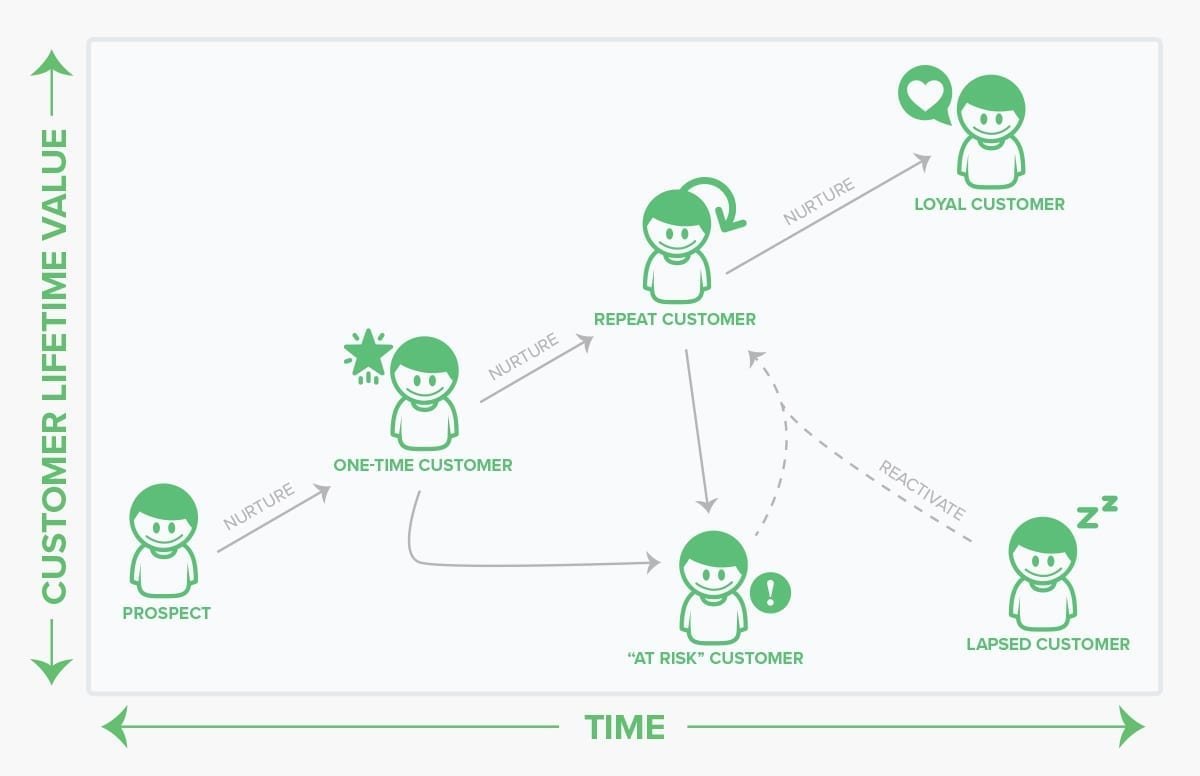
As you’re setting your automation, have recognizable lists and segments so that you don’t send emails to a person that shouldn’t receive them. For example, if an abandoned cart turned into a purchase, that person shouldn’t keep getting reminders about abandoned carts.
The best tools I have used for these are Conversio and Klaviyo.
Have A Pre-Purchase Sequence
These are the emails you send before someone buys from you. The goal here is to convert and make a sale. You should have a set of 3-5 set emails welcoming a potential customer and getting them to want to buy from you.
While welcoming them in the first email, try to build trust as well, and an offer can go a long way to motivate them to buy from you.
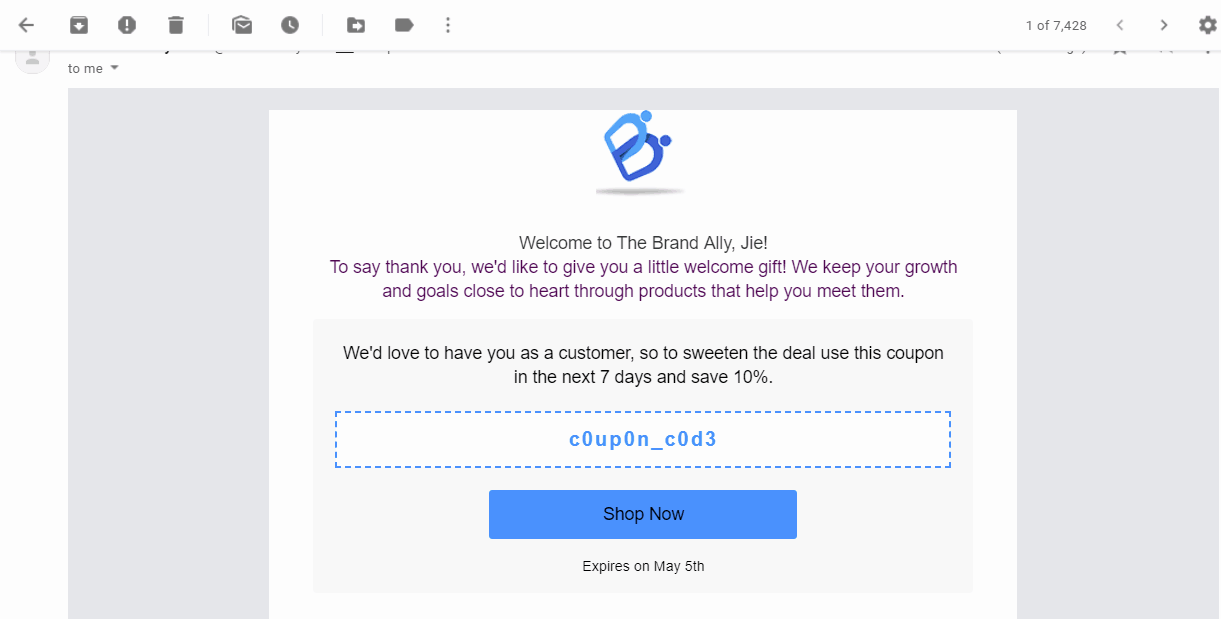
If they don’t use it, after a while, remind them of the offer, convince them with social proof, and send the offer again. It doesn’t have to be like that for you, but that’s a strong starting point.
Have good timing with this – don’t bombard them with ten emails in one day. Also, sound human. That’s essential to converting anyone you send your emails to.
Set Up Abandoned Cart Emails
Many people abandon carts. That amounts to about $4.6 trillion in lost ecommerce sales. You need to have a way to get them back to complete their purchase. Set up a series of abandoned cart emails that offer incentives. Some people will get one email and purchase; some others need three reminders before they move forward.
Have An After-Purchase Series
After customers buy from you, you have the opportunity to get feedback from them on how the selling process was and convince them to buy more.
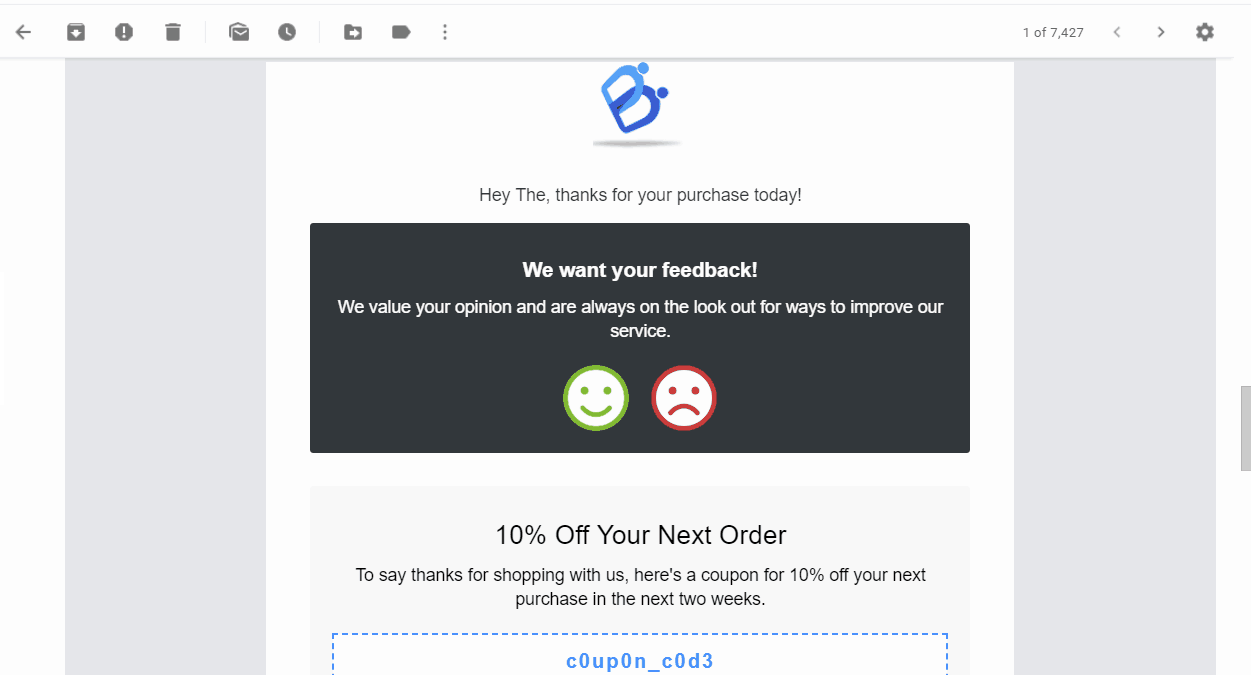
For the first email, send them their receipt, get feedback, and give them an offer on their next purchase.
After you’ve fulfilled the sale, get a review on the product, then send them a reminder on the offer that you sent in the first email (if they haven’t used it yet).
After a while, you can remind them about the product review that they failed to give. Add another email trigger for days later and send another offer of products that you think they’ll buy. Afterward, send the discount reminder again in another email.
The key to working these emails is spacing them out. If you bombard them, you’ll see them unsubscribing from your list. You don’t want that. The sequence I wrote above can take 40 days to go through all. There’s no need to rush it.
Set Up A First Time Customer Series
It’s cheaper to turn first-time customers into repeat buyers than to convert freshers. After the receipt email, you should have emails in the sequence that get them to trust you. Set up appreciation emails and content emails for how-tos on what they bought and other content.
Have Repeat Customer Series
If someone buys from you twice, that means that they like you. Leverage that to get more purchases and new customers. Set up an email for referral/loyalty and drive them back to content on your website. Also, I suggest that you have a different repeat customer receipt template. Make them feel appreciated in the email; let them know that you noticed that they bought from you again.
Set Up Customers Winback Series
These emails are for customers that haven’t bought from you in a while. Send an offer in the first email.
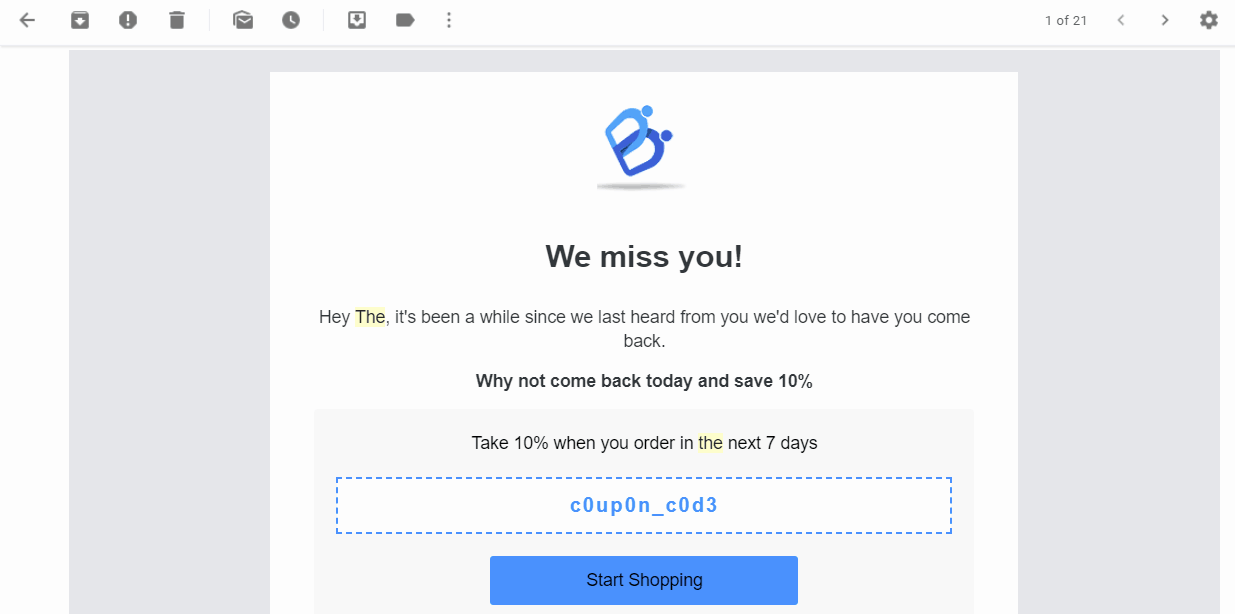
The next one can be a recommended product, along with the reminder of that discount in the first email. The third is a higher offer than the first one.
Your email automation doesn’t have to follow my tested patterns, but for a start, you could try them out.
Additional Resources:
- 14 Abandoned Cart Email Examples Proven to Boost Revenue
- 13 fresh ecommerce email ideas to turn your subscribers into loyal customers

Promote Your Website
You better realize that a website without traffic isn’t something that you can bank on. Having nice-looking pages and a fast site does nothing for you if people are not seeing it. By people, I don’t mean one every month. Have a target for the unique visitors you want per month, ten months, and so on.
Before you start promoting your website, it’s worth testing everything out.
Test To Ensure That Everything Works
Testing is the absolute way to make sure that all you’ve done works. Skipping this is senseless. Check on both mobile and desktop that Images, icons, and links are alright. Also:
- Place a test order with a live gateway to see the checkout, post-purchase upsell, and thank you page.
- Do the test purchase on mobile as well. Test multiple payment methods to make sure everything works.
- Ensure that your brand name shows up on the credit card statement the way you want
- Check your category and search results pages to see if the product filter and other elements are good.
- Have your friends/family test the pages as well to see from different eyes
- Ensure that elements that shouldn’t be indexed (like templates) aren’t on your sitemap.
- Test your website speed
- Permanently delete any sample page you made while setting up your store
- Company contact details are clearly and correctly displayed.
- Images have appropriate alt texts.
Is there a plugin/tool conflict? Find out which is conflicting. You can uninstall them one after the other to see which is. If a conflicting tool can be replaced with another – caching plugin, for example – replace it. Check your Facebook Pixels too. If it isn’t working correctly, check your event – are they being fired correctly?
There is much more to check. Read through this checklist as well, and make sure that your online presence is tight.
Start FB Ads
Before you set up your ads, create a Facebook Business Page and business manager. If you’d rather create ads using your personal profile, you don’t need to do the two above, but I recommend that you set them up. Next, connect an ad account to the business manager. This link pretty much explains how to do that.
After that, set up your Facebook Pixel and add it to your site. Do these as well:
- Connect it to your business manager
- Use a plugin to connect the pixel to your shopping cart
- Add basic events
- Add products to your Facebook page
- Send sales data to Facebook to track ROI
- Test events in real-time
Ensure that you have remarketing in place, focus on funnels, and get resonating ad copy and images. You wouldn’t get anywhere with mediocre content here. Go to your competitors’ pages and spy on their ads to see what they are offering.
Promoting through Facebook is more than knowing how to open and set up accounts. Always make sure that your personas and targeting are on point. This is a legit way to get people to want more from you after viewing your ad.
Instagram Marketing
68% of users engage with brands on Instagram over Facebook’s 32%. It has one of the highest ROI on social media. With hashtags, you can get people that don’t know you to notice your presence. You can see stories are huge right now.

Use the right ones, and run contests with them to get people over to your website. Engage with other brands – not your competitor. You could comment on, like, or follow an influencer or blogger, for example.
- Post photos constantly on Instagram (2 times per day)
- Create at least two stories per week.
- Add your sales funnel link to your bio.
- Find legit influencers that align with your brand.
- Reach out to Influencers and pay for shoutouts.
Content Promotion and Link Building
To maximize the number of people that see your content, you need to promote it. Make amazing and skimmable content, then promote it hard. Contact influencers and bloggers that are likely to accept your post – those interested in the topics that you’re about, post regularly and are active in your niche.
Warm them up before contacting them. You can share their content, follow them, or whatever tactic you come up with. Use Buzzstream to get their email addresses and send them targeted emails, but don’t come off as needy or pushy.
Working on building links for all your pages at the same time is overwhelming, and you wouldn’t get the result you want. Instead, grind hard with a few pages for some months. Also, don’t try getting links from spammy sites or bots. Get links from trusted authority sites instead.
Tools & Resources:
- The Beginners Guide To Facebook Advertising
- Hype Auditor
- ECOMMERCE SEO: The Definitive Guide
- 7 Leading Instagram Hashtag Generator Tools on the Web
- What is Ecommerce Marketing? Top Strategies, Tips & More
- How to Sell On Instagram
- How to Sell Your Ecommerce Business + Get the Best Profit
- How to Sell Your Shopify Store
- How to Sell on Pinterest
FAQs
Building And Promoting A Successful Online Store Is Hard Work
You can start an online business with this guide but don’t expect things to be a breeze. Running your own online store is harder than many people think. You might not get sales as fast as you want. Don’t have unrealistic expectations – it’s not just about uploading products. It’s about more than your business name, You need hard marketing and strategy. Creating an online store that’s successful is hard work. Even when you start selling, keep grinding hard, and you’ll get there at some point.
I couldn’t go more in-depth on each step because this is just one post. I have written articles on some of the points and linked to them in the article. Follow the links and be better prepared to sell online.




